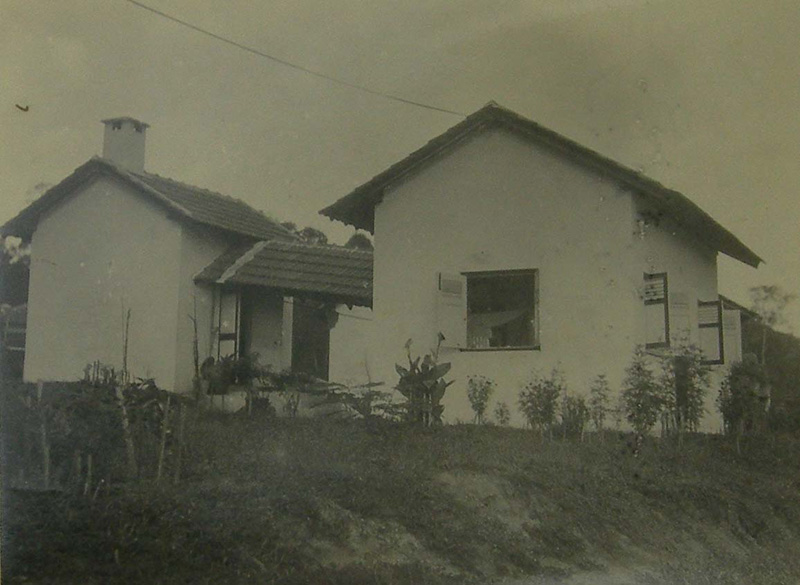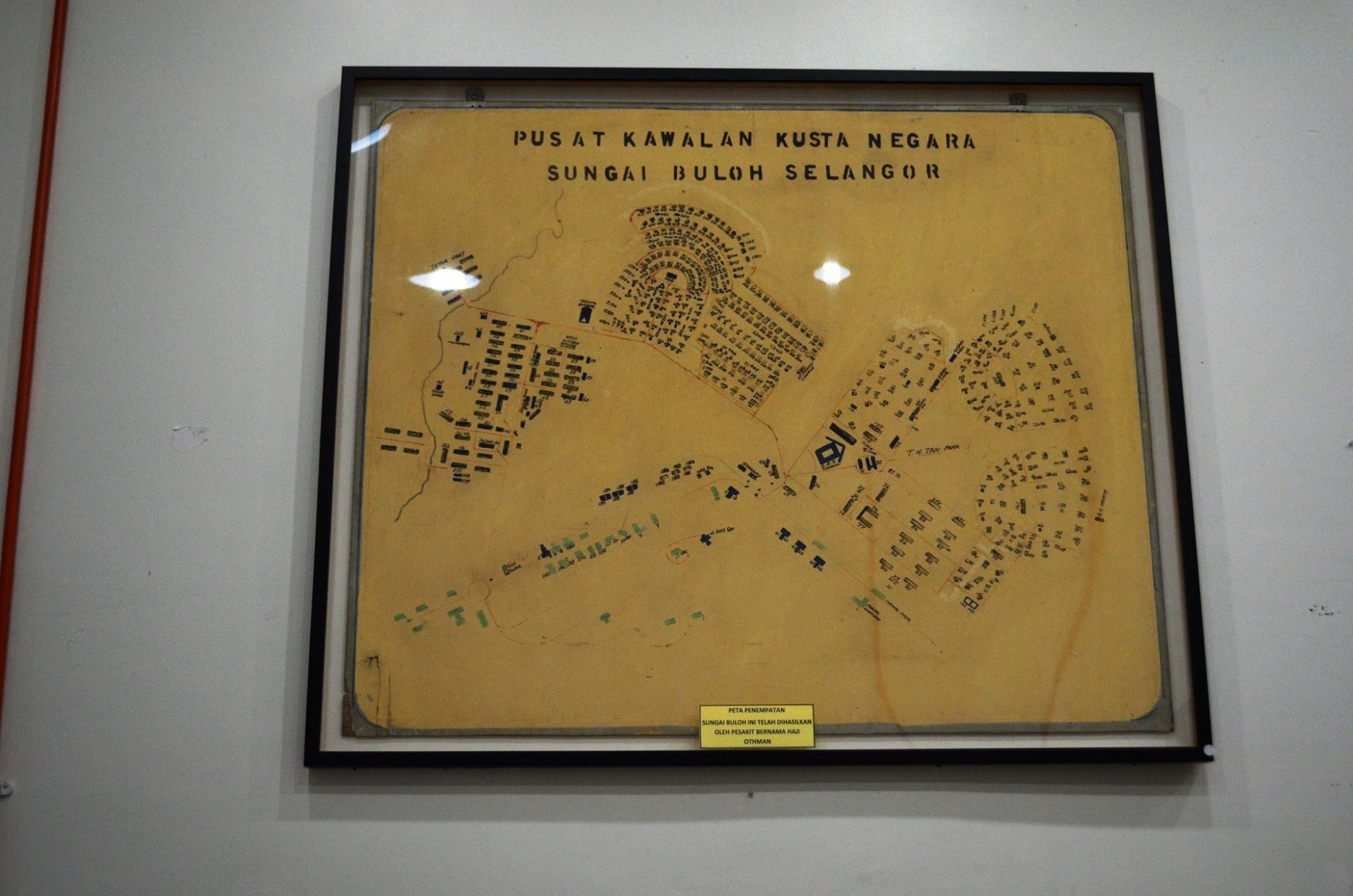Sungai Buloh Leprosy Settlement
Life was dull and many of the patients there wanted to run away. Lee said it was Dr KM Reddy an Indian national who was the director and head of the Sungai Buloh Leprosy Centre in 1957 who introduced gardening to the patients in.

Sungai Buloh Malaysia International Leprosy Association History Of Leprosy
Picture by Soo Wern Jun.

Sungai buloh leprosy settlement. The Way Home Ean Nee Tan and Joshua Wong have produced a beautiful collection of stories developed from interviews with people who lived in Sungai Buloh Leprosy Settlement just outside Kuala Lumpur in Malaysia. Sungai Buloh was at one point the second biggest leprosy settlement in the world. From the time the settlement was developed in 1930 Sungai Buloh was one of the biggest leprosy settlements in the then-British Empire and the second biggest in the world.
It was first mooted by Dr. Travers from the British in 1923. The second largest leprosarium in the world was established in 1930 to provide better living conditions for leprosy patients.
4 Exceptional example of modern sub. And last but not least. But the place holds a lot of history specifically on the leprosy community in Malaysia.
Former leprosy patient and vice-president of the Sungai Buloh Settlement Council Lee Chor Seng at his home in the settlement August 14 2019. SUNGAI BULOH Aug 25 Three years after the idea was first mooted to list the Sungai Buloh Leprosy Settlement as a Unesco World Heritage site it is no nearer to achieving its objective. Picture by Hari Anggara SUNGAI BULOH Aug 25 Three years after the idea was first mooted to list the Sungai Buloh Leprosy Settlement as a Unesco World Heritage site it is no nearer to achieving its objective.
Space Taboos and Memories of Sungai Buloh Leprosy Settlement. The Sungai Buloh Settlement was established for a reason. The conditions were maybe partly thanks to the colonial law that required them to be isolated from the general population.
Mostly known as Valley of Hope by the residents and the locals the Sungai Buloh Leprosy Settlement was constructed and operated in 1926 Leper Enactment Act which required the segregation and treatment of those with the disease. The Sungai Buloh settlement The Valley of Hope. The centre was established in 1929 named The Federal Leper Settlement at Sungai Buloh or Sg.
As a self-contained settlement most of the jobs and employment in the Leprosarium were undertaken by the leprosy patients. In the Sungai Buloh Leprosarium the patients participated as clerks typists teachers nurses carpenters police officials fire. The Sungai Buloh Settlement Heritage Committee is currently working with the National Heritage Department and the Selangor State Government to get the.
Sungai Buloh Malaysia Sungai Buloh settlement 1932. After 80 years of history there are only less than 400 people remaining in the Sungai Buloh Leprosy Settlement. Panoramic View of Sungai Buloh Leprosy Settlement.
Apparently the Sungai Buloh Settlement was the second largest leprosarium in the world at its peak. Sungai Buloh Leprosy Settlement. Preserving the Sungai Buloh settlement and its residents is a way of paying tribute to leprosy survivors.
Leprosy patients in Malaysia gained access to a cure for the disease with the introduction of dapsone in 1948 and when the government launched a leprosy control program in 1969 compulsory isolation of leprosy patients was stopped and the. The Sungai Buloh leprosy settlement is probably the earliest modern settlement that represents the fundamental idea of what multi-racial living is all about. This settlement which once had more than 2000 patients has no new cases after prevention and cure treatments were found in the 1980s.
The Culion Island Settlement in the Philippines with its population of around 6000 established some 20 years earlier was certainly. The burial site is located at the back of the SBLS mosque which is named after Ibn Sina or Avicenna c. Picture by Soo Wern Jun Lee said it was Dr KM Reddy an Indian national who was the director and head of the Sungai Buloh Leprosy Centre in 1957 who introduced gardening to the patients in.
The Sungai Buloh Settlement was constructed in the wake of the 1926 Leper Enactment Act which required the segregation and treatment of those with the disease. Shared Metaphors Between Lepers and the May Thirteenth Victims By Por Heong Hong A few weeks ago I took an excursion to visit Mr Lee Chor Seng who is an old friend a leprosy recovered patient and a five-decade resident at Sungai Buloh Leprosy Settlement SBLS while traveling to a nearby area. Since then some of them returned to the society and reunited with their families.
When the new settlement at Sungai Buloh was officially opened in 1930 it was practically the largest and most modern leprosarium in the British Commonwealth. At a time when there was yet to be a cure for illness leprosy was thought to not only be. Those who were unable to flee could only rely on government-supplied opium.
It was equipped with advanced facilities and remained a research centre for leprosy until today. A rather quiet town in Selangor Sungai Buloh is known for the Sungai Buloh Hospital which has served as one of the go-to hospitals when health epidemics hit the country. The Isolated Emotional World of Former Leprosy Patients and Their Descendants translated by Khor Jiak Ling Malaysia.
Sungai Buloh Leprosy SettlementSBLS established on 15th August 1930 is located at Selangor State Peninsular Malaysia. In the 1920s many leprosy patients were isolated from society at a leprosarium in Setapak Kuala Lumpur. Former leprosy patient and vice-president of the Sungai Buloh Settlement Council Lee Chor Seng at his home in the settlement August 14 2019.
In 1965 it was renamed as Sungai Buloh Leprosarium and changed to its current name in 1969. It was established by doctor Ernest Travers as a response to the horrible living conditions of the leprosy patients in KL. Location plan In 1930 a lush valley 25 kilometers from Kuala Lumpur became the largest leprosy colony in the British Commonwealth.
Sungai Buloh Settlement A map of Sungai Buloh created by a leprosy patient Haji Othman. The beautiful scenery with hills of beautiful trees as our back drop. 970-1037 the famous Persian philosoher and writer of the medical encyclopedia The Canon of Medicine and of The Book of Healing.
The Sungai Buloh Leprosy Settlement provides us the one and only basketball court badminton court ping pong tables jogging track. Up to 12 cash back This chapter examines the evolving discourses in the preservation movement of the Sungai Buloh Leprosy Settlement SBLS that emerged in 2007 as a resistance against its demolition. With destigmatisation of leprosy as a core objective the movement interprets colonial governance in positive terms and presents oral history accounts.
Sungei Buloh was a pioneer project based on the enlightened policy of segregating leprosy patients in a self-supporting community following the principles of a. A view of the Sungai Buloh Leprosy Settlement where leprosy patients were once segregated and isolated from the outside world. The leprosarium was like hell on earth.
It was the largest and most well equipped leprosy asylum and research center among the Commonwealth Countries of the British Colony. In recent years the original 230ha leprosy settlement has been subdivided and the Sungai Buloh Hospital and medical faculty of Universiti Teknologi Mara were built on the land.
The Valley Of Hope Poskod Malaysia


Komentar
Posting Komentar